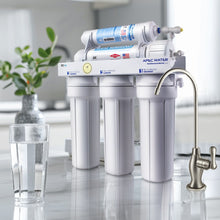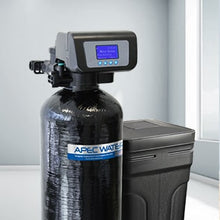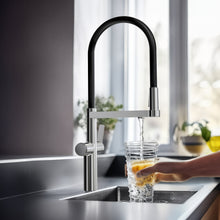Why is the water cycle important? Well, covering 70% of the planet, water is the basis of life on earth. It is an important factor of growth, health, and many day to day activities. Think of all the ways you use water every single day. In order for water to perform those important functions, it needs to be replenished, purified, and circulated again and again.
The Water Cycle Steps Explained:
The simplest way to describe the water cycle, also known as the hydrologic cycle, is the continuous movement of water on, above, and below the surface of the Earth. It involves the exchange of heat energy, which leads to changes in temperature and moisture levels in the atmosphere, oceans, and land. The water cycle is driven by solar energy and involves several stages including evaporation, transpiration, condensation, precipitation, infiltration, and runoff. These stages are connected, and water can move from one stage to the next, eventually returning to oceans and other bodies of water where the cycle starts again.
The water cycle has many effects including the regulation of temperature and weather, circulating important minerals, and creating various geographical features.
The labeled water cycle diagram below illustrates some of those main functions in the water cycle.

Water Cycle
The 7 Stages of the Water Cycle:
Let’s dive a little deeper into the water cycle steps and how they work.
Step 1: Evaporation
The first of the water cycle steps begins with evaporation. It is a process where water at the surface turns into water vapors. Water absorbs heat energy from the sun and turns into vapors. Water bodies like oceans, seas, lakes and rivers are the main source of evaporation. Through evaporation, water moves from hydrosphere to atmosphere. As water evaporates it reduces the temperature of those water bodies.
Step 2: condensation
As water vaporizes into water vapor, it rises up in the atmosphere. At high altitudes the water vapor changes into very tiny particles of ice /water droplets because of low temperature. This process is called condensation. These particles come close together and form clouds and fogs in the sky.
Step 3: Sublimation
Apart from evaporation, sublimation also contributes to water vapors in the air. Sublimation is a process where ice directly converts into water vapors without converting into liquid water. This phenomenon accelerates when the temperature is low or pressure is high. The main sources of water from sublimation are the ice sheets of the North Pole and the South Pole and the ice caps on the mountains. Sublimation is a rather slower process than evaporation.
Step 4: Precipitation
The clouds (condensed water vapors) then pour down as precipitation due to wind or temperature change. This occurs because the water droplets combine to make bigger droplets, so when the air cannot hold any more water, it precipitates. At high altitudes the temperature is low and hence the droplets lose their heat energy. These water droplets fall down as rain. If the temperature is very low (below 0 degrees), then the water droplets would fall as snow. In addition, water could also precipice in the form of drizzle, sleet and hail. Hence water enters lithosphere by landing upon the earth.
Step 5: Transpiration
As water precipitates, some of it is absorbed by the soil. This water enters into the process of transpiration. Transpiration is a process similar to evaporation where liquid water is turned into water vapor by the plants. The roots of the plants absorb the water and push it toward leaves where it is used for photosynthesis. The extra water is moved out of leaves through stomata (very tiny openings on leaves) as water vapor. Thus water enters the biosphere (plants and animals) and exits into a gaseous phase.
Step 6: Runoff
As the water pours down (in whatever form), it leads to runoff. Runoff is the process where water runs over the surface of earth. When the snow melts into water it also leads to runoff. As water runs over the ground it displaces the top soil with it and moves the minerals along with the stream. This runoff combines to form channels, rivers and ends up into lakes, seas and oceans. Here the water enters the hydrosphere.
Step 7: Infiltration
Any water that doesn't run directly to bodies of water or get quickly evaporated, will be absorbed by plants and soil, where it may be driven deeper to the earth. This is called infiltration. The water seeps down and increases the level of the ground water table. Underground water tables typically provide pure clean water that is safe to drink. The infiltration is measured as inches of water-soaked by the soil per hour.
What Is Our Role?
As benefactors of the water cycle, we sometimes interfere with or take advantage of the process in order to reach our own goals. Whether it be for better or for worse, we humans alter the water cycle through activities such as:
Deforestation: Trees help regulate the water cycle by transpiring water vapor into the atmosphere and slowing down runoff. Deforestation reduces these natural processes and increases runoff and evaporation.
Urbanization: Urbanization changes the land cover and increases the amount of impermeable surfaces like asphalt and concrete, reducing the amount of water that infiltrates into the ground and increasing runoff.
Agricultural practices: Irrigation, for example, moves water from one location to another and changes the amount and timing of water available for plants and animals.
Water withdrawals: Withdrawing water from rivers, lakes, and aquifers for domestic, agricultural, and industrial use, reduces the amount of water available for other parts of the water cycle, and affects the ecosystems in the environments from which we collect water.
Climate change: Human activities like burning fossil fuels and deforestation contribute to climate change, which can alter the water cycle by changing precipitation patterns, temperatures, and evaporation rates.
How Does Water Filtration Fit In?
Water filtration is an important part of the water cycle as it helps to clean and purify water that has been contaminated by pollutants and other impurities. As water moves through the water cycle, it can pick up pollutants from sources such as agricultural runoff, industrial waste, and sewage.
Filtration systems are used to remove these impurities and make the water safe for consumption and other uses. For example, many cities use filtration plants to purify water from rivers and lakes before distributing it to homes and businesses. The filtration process typically involves several steps, including coagulation, sedimentation, and filtration through activated carbon or other materials. By removing pollutants from water, filtration helps to protect public health and the environment.
In this sense, water filtration is an important part of the water cycle as it helps to maintain the quality of water and ensures that it remains available for all of its many uses. By preserving the quality of water as it moves through the cycle, filtration helps to maintain the delicate balance of the Earth's ecosystems and ensure the availability of fresh water for future generations.
See how the water cycle can affect your health
For Teachers:



